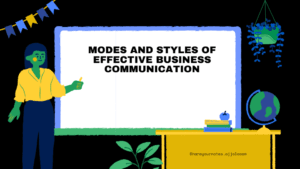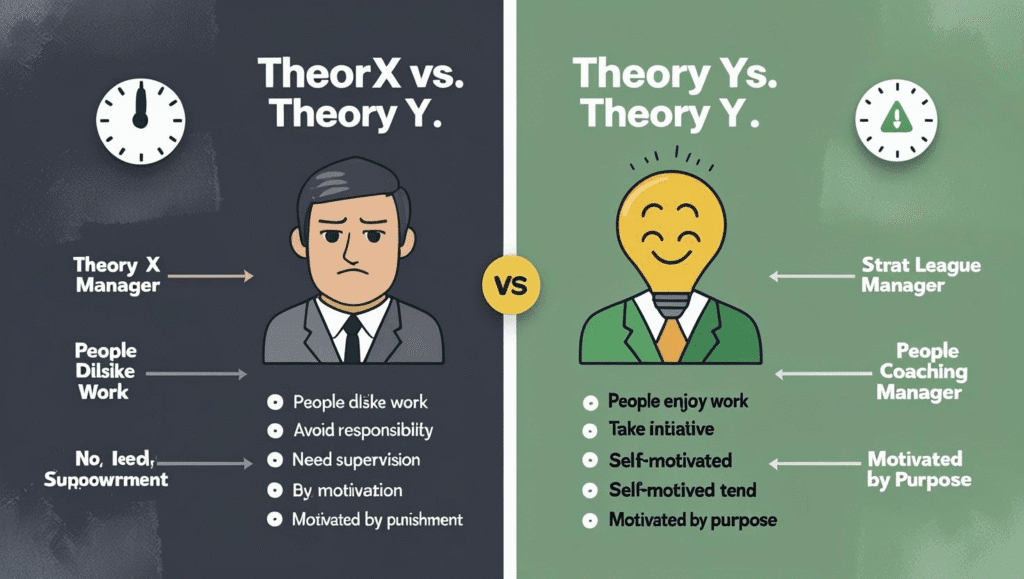The Communication Compass: Exploring the Different Modes and Styles of Effective Business Communication
In the intricate ecosystem of any business, communication is the lifeblood. It’s the force that aligns teams, builds client relationships, drives projects forward, and shapes corporate culture. Yet, we often treat it as a single, monolithic skill. The reality is that “communication” is a vast landscape with varied terrain. The way you speak to your team in a brainstorming session is fundamentally different from how you write a formal project report. The key to navigating this landscape successfully lies in understanding the **different modes and styles of communication** and knowing which to use in any given situation. 🗣️📝
Think of a master craftsperson. They don’t use a sledgehammer for delicate woodwork; they have a full toolkit and select the right tool for the specific task. Similarly, an effective communicator doesn’t rely on a single approach. They possess a “communication compass,” allowing them to navigate between verbal and written, formal and informal, and visual and non-verbal cues to ensure their message is not just sent, but received, understood, and acted upon.
This comprehensive guide will serve as your map to this landscape. We’ll explore the four primary modes of communication and the two overarching styles that govern our interactions in the U.S. business world. Mastering this framework will empower you to communicate with greater precision, empathy, and impact in every professional scenario.
Key Takeaways: Your Communication Toolkit 🧰
- There are four primary **modes** of communication: **Verbal, Non-Verbal, Written, and Visual**.
- There are two main **styles** of communication: **Formal** and **Informal**.
- Effective communication involves choosing the right combination of mode and style for the specific audience, message, and context.
- Non-verbal cues often communicate more than our words, making face-to-face interaction powerful for sensitive topics.
- Written communication provides a permanent record, but as the pros and cons of email show, it lacks emotional nuance.
The Four Modes of Communication: The “How” of Your Message
The mode of communication refers to the channel or medium through which a message is transmitted. Each mode has unique strengths and weaknesses.
1. Verbal Communication
This is the use of spoken words to share information. It’s the most common and often the most efficient mode for real-time interaction. It includes everything from a casual conversation by the water cooler to a formal presentation in a boardroom.
- Examples: Face-to-face meetings, phone calls, video conferences (Zoom, Teams), presentations, and voice notes.
- Strengths: It’s immediate and allows for instant feedback and clarification. Tone of voice can convey nuance and emotion that written words cannot. It’s excellent for building rapport and brainstorming.
- Weaknesses: It’s ephemeral; there is often no permanent record unless it’s recorded. It can be prone to misinterpretation if the listener is not paying close attention. It’s inefficient for communicating detailed, technical information to a large group.
2. Non-Verbal Communication
Often accompanying verbal communication, this is the transmission of messages without words. It’s the “silent language” that can often speak louder than our words. Experts believe that non-verbal cues make up a huge percentage of the meaning in any face-to-face interaction.
- Examples: Body language (posture, gestures), facial expressions (a smile, a frown), eye contact, and even your physical appearance and the setup of your office space.
- Strengths: It provides powerful emotional context and can build or destroy trust in an instant. It reveals the true feelings behind the words. A confident posture can reinforce a strong message, while avoiding eye contact can signal dishonesty.
- Weaknesses: It can be highly ambiguous and culturally dependent. A gesture that is positive in one culture may be offensive in another. It’s completely absent in many forms of written communication, which is a major drawback.
“The most important thing in communication is hearing what isn’t said.” – Peter Drucker. This is the essence of non-verbal communication.
3. Written Communication
This involves any message that is transmitted through written words. In the digital age, this mode has become more dominant than ever. It’s the primary tool for creating a formal record and for communicating detailed information asynchronously.
- Examples: Emails, memos, formal reports, business proposals, instant messages (Slack, Teams), and official documents like a press release.
- Strengths: It provides a permanent, verifiable record that can be referenced later. It allows the writer time to craft a message carefully and the reader time to digest it. It’s ideal for complex, detailed information that needs to be precise.
- Weaknesses: It lacks immediate feedback. More importantly, it is stripped of non-verbal cues and tone of voice, making it highly susceptible to misinterpretation. An otherwise innocent email can easily be perceived as cold or angry.
4. Visual Communication
This is the use of images, graphs, charts, and other visual aids to convey information. In a data-driven world, the ability to communicate visually is an increasingly critical skill. A good visual can simplify complex information and make it more memorable.
- Examples: Charts in a financial report, slides in a PowerPoint presentation, infographics on a website, a whiteboard diagram during a brainstorming session.
- Strengths: Visuals can often communicate complex data and relationships far more effectively than words alone. They can cross language barriers and are highly engaging. The human brain processes images much faster than text.
- Weaknesses: Poorly designed visuals can be more confusing than helpful. They can lack the nuance and detailed explanation of written text and often require verbal or written support for full context.
| Mode | Best For | Key Challenge |
|---|---|---|
| Verbal | Building rapport, quick feedback, brainstorming | No permanent record, relies on memory |
| Non-Verbal | Conveying emotion, building trust | Culturally sensitive, can be ambiguous |
| Written | Formal records, detailed information, asynchronous comms | Lacks emotional tone, high risk of misinterpretation |
| Visual | Simplifying complex data, enhancing presentations | Can be confusing if poorly designed, may lack context |
The Two Styles of Communication: The “Tone” of Your Message
Layered on top of these modes are two overarching styles that dictate the tone, language, and structure of your communication.
1. Formal Communication
Formal communication follows the official, hierarchical lines of an organization. It is professional, objective, and meticulously structured. The language is precise, and the tone is serious and respectful. It is used for official business, legal matters, and when communicating with clients or superiors.
- Examples: A business plan, an annual report, a job offer letter, a legal contract, a presentation to the board of directors.
- When to use it: When creating a permanent record, when the topic is serious or sensitive, and when communicating with external stakeholders or those higher up in the organizational chart.
2. Informal Communication
Informal communication is more casual, personal, and spontaneous. It does not follow the rigid lines of the organizational hierarchy and is often referred to as the “grapevine.” It’s the everyday, relational communication that builds camaraderie and keeps teams connected.
- Examples: A quick chat with a colleague in the hallway, a team lunch, a celebratory email after a project win, a direct message on Slack.
- When to use it: For building team culture, for quick, non-critical updates, and for fostering collaboration and a positive work environment.
Mastering the Craft of Communication
Becoming an effective communicator requires continuous learning and practice. These books, available on Amazon, are essential resources for anyone looking to master the art and science of business communication.

Crucial Conversations: Tools for Talking When Stakes Are High
This book provides a powerful framework for navigating high-stakes verbal communication, ensuring you can speak your mind effectively and persuasively.
View on Amazon
HBR Guide to Better Business Writing
From the experts at Harvard Business Review, this is a masterclass in effective written communication, from emails to formal reports.
View on Amazon
The Definitive Book of Body Language
An essential guide to understanding and using non-verbal communication, helping you to read the “silent language” in any business interaction.
View on AmazonFrequently Asked Questions (FAQs)
Q1: Which mode of communication is the “best”?
A: There is no single “best” mode. The most effective communicators are situational; they choose the mode based on the message’s urgency, complexity, and sensitivity. A complex, sensitive issue like a performance review should be done verbally and face-to-face. A detailed project update for the whole team is best done in writing.
Q2: How do I choose between a formal and informal style?
A: Consider your **audience** and your **purpose**. When communicating with a client, a senior executive, or someone you don’t know well, always default to a more formal style. When communicating with close colleagues about non-critical issues, an informal style is usually appropriate. The purpose also matters: a request for a day off should be more formal than a message asking a teammate to grab coffee.
Q3: In the age of remote work, has the importance of non-verbal communication decreased?
A: Not at all—in fact, it has become even more critical to be mindful of it. With the rise of video conferencing, our on-camera body language, facial expressions, and even the background of our home office have become important non-verbal cues. This is why many remote teams emphasize “cameras on” policies for important meetings—to restore some of that vital non-verbal context.
Q4: How can I improve my visual communication skills?
A: Start by focusing on simplicity and clarity. When creating a chart or graph, ask yourself, “What is the single most important message I want this visual to convey?” Remove any clutter (unnecessary gridlines, 3D effects, distracting colors) that doesn’t support that message. Learning the basics of data visualization and graphic design principles can be a huge career asset.


